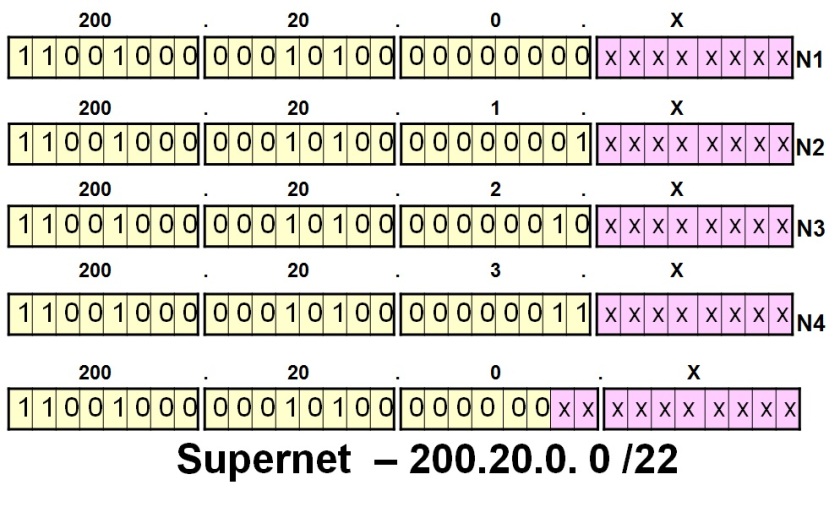Supernetting is the opposite of Subnetting. In subnetting, a single big network is divided into multiple smaller subnetworks. In Supernetting, multiple networks are combined into a bigger network termed as a Supernetwork or Supernet.
Supernetting is mainly used in Route Summarization, where routes to multiple networks with similar network prefixes are combined into a single routing entry, with the routing entry pointing to a Super network, encompassing all the networks. This in turn significantly reduces the size of routing tables and also the size of routing updates exchanged by routing protocols.
More specifically,
- When multiple networks are combined to form a bigger network, it is termed as super-netting
- Supernetting is used in route aggregation to reduce the size of routing tables and routing table updates
Examples for Supernetting
Example – 1
Consider two networks with addresses 200.20.0.x/24 and 200.20.1.x/24. Both these networks have the same 23 bits network prefix and differ only in their 24th bit. Hence these two networks could be combined and summarized as a Super network with the address 200.20.0.x/23.
Note that the network mask has been reduced to 23 for the supernet. While subnetting borrows bits from the host portion of the IP address, supernetting borrows bits from the network portion of the IP address.
Example – 2
Similarly, if you take the four networks 200.20.0.x/24, 200.20.1.x/24 , 200.20.2.x & 200.20.3.x/24, they all have the same 22 bits network prefix and differ only starting from the 23rd bit. Hence these four networks could be combined into a single supernet as 200.20.0.x/22.
The diagram below illustrates this example of combining the four networks into a single Super network.

In the above example, all the four networks N1 to N4 have the same network prefix for the first 22 bits. Hence, Supernetting exploits this property and combines these four networks into a single Supernet, with a subnet mask of /22, for route aggregation purposes. Hence using this technique, four routing entries can be combined into a single routing entry, thereby reducing the size of routing tables and routing updates.